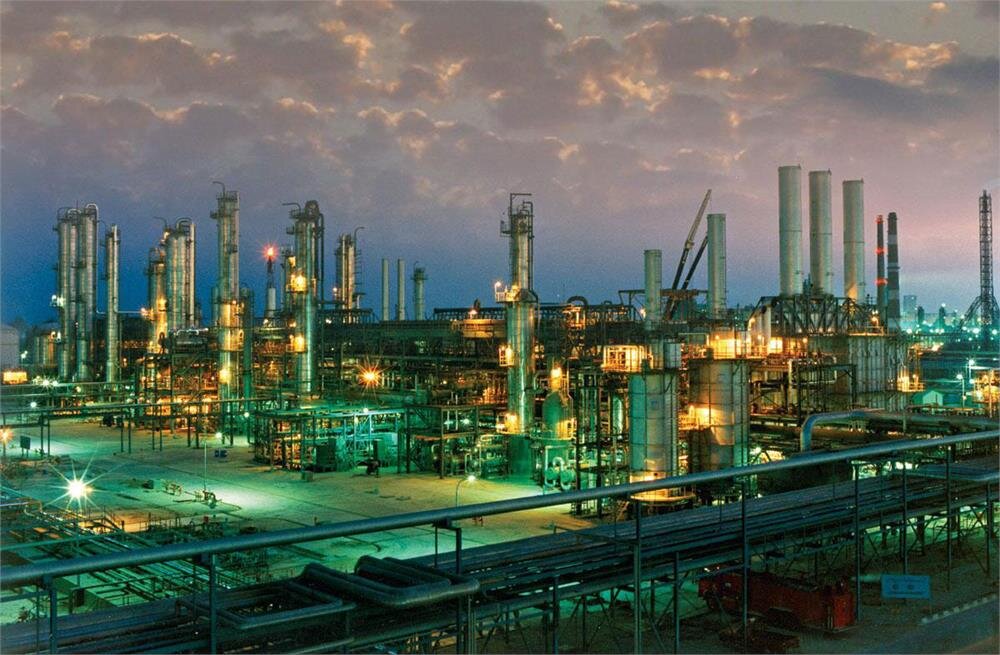Small-scale petchem plants, huge potentials for a brighter future

TEHRAN – Having the world's second largest gas reserves, Iran has a great potential for expansion of its petrochemical industry which is playing a great role in the country’s economy.
Considering the country’s abundant supply of feedstock for the petrochemical complexes, Iran offers such products to the world markets with considerably lower prices compared to other major petrochemical producers, making them very competitive and sought after.
In the past few years, especially since the re-imposition of the U.S. sanctions and especially when petrochemical industry was added to the list of sanctions, many expected the petrochemical industry in Iran to be hugely affected by the sanctions, however the industry is thriving and despite some challenges and obstacles, it is strongly moving forward.
Small and medium-sized complexes comprise a big share of Iran’s petrochemical industry and considering the focus of sanctions of major complexes, private companies and small-scale plants could play a significant role in boosting the country’s exports in this area.
So, to have a look into this aspect of the country’s petrochemical industry, Tehran Times conducted an interview with Mehdi Pourqazi, former member of the board at Tehran Chamber of Commerce, Industries, Mines and Agriculture (TCCIMA) and the deputy head of Iran National Plastic and Polymer Industrial Association (INPIA). What comes below is a summary of our discussion.
The new era
According to Pourqazi, in the past two years the shift in the economic transactions with the neighboring countries has resulted to a boost in the exports of petrochemical and plastic products from Iran to the neighboring countries like Iraq and Afghanistan.
considering the country’s current economic situation and the impact of the unjust U.S. sanctions the National Petrochemical Company (NPC) has been following a new strategy based on which the country’s petrochemical industry is moving away from exporting only base products and is diversifying its output to products with more added value. In other words, the petrochemical industry is moving toward expanding its exports basket rather than selling just raw materials, he explained.
“One of the main steps which could help diversify the exports, is to support small complexes to join the exporters club,” Pourqazi added.
In the past two years the exports of petrochemical products have witnessed a significant rise and although most of this increase is still only due to the great potentials of the country for producing base products, but the industry is moving in the right direction toward more value added products like compounds and Masterbatch.
Challenges and obstacles
Speaking about increasing exports, the official noted that one major issue which must be considered when talking about the petrochemical industry is the huge capacity of the country’s small and medium-sized plastic and polymer producers, which has unfortunately been relatively neglected so far.
Aside from the big complexes, one major obstacle in the way of raising the country’s petrochemical exports is, in fact, the weak presence of the small complexes in the export markets.
“Problems like lack of information and knowledge about the destination markets, banking problems, issues regarding the access to foreign currencies with official rates and commitments for returning the allocated currency into NIMA [the country’s Forex Management Integrated System],” he said.
He went on saying: “For instance the government expects the exporters to re-inject their foreign currency incomes into NIMA within a specific timeline. However considering the limited gateways for banking transactions with other countries under the sanctions and lack of proper channels for transferring foreign currency into the country, the exporters mostly face problems for doing so and we expect the government to support their activities through easing some of the regulations in this regard.”
Some of our producers have already limited their exports since they haven’t been able to re-inject the committed foreign currency into NIMA, Pourqazi added.
Here we should note that the Iranian government provides the country’s exporters with foreign currency at a lower exchange rate compared to the free market and in return it expects the exporters to return the allocated amount within a specific deadline.
The future
According to Pourqazi, currently, more than 55 petrochemical plants are active in Iran. The annual production capacity of these units, under normal conditions, is over 60 million tons.
“Using the full capacity of these petrochemical complexes, the value of annual exports from this sector could reach over $16 billion,” he said.
Last year, Iran exported 20 million tons of petrochemical products worth more than $10.6 billion. Major export destinations for Iranian petrochemical products have been the neighboring countries, including Iraq, the United Arab Emirates, Turkey, Afghanistan and East Asian countries, such as China.
“If the country’s Sixth National Development Plan is fully implemented, revenues from petrochemical products sales could rise even to $50 billion.”
According to the provisions of the national development plan regarding the petrochemical industry, Iran should become the region's leading power in the industry. This goal requires both foreign investment and improvement in the country’s domestic bodies.
“The petrochemical industry needs over $85 billion of investment to reach its goals for developing the industry by the year 1404 (starts in March 2025). Given the U.S. sanctions on the oil and gas industry, and the recent sanctions on the petrochemical industry, achieving the goals of the Sixth Petrochemical Development Plan won’t be easy, however, our petrochemical industry can still thrive if the government shifts its focus and put more importance upon the small and medium-sized complexes,” he said.
EF/MA
Leave a Comment